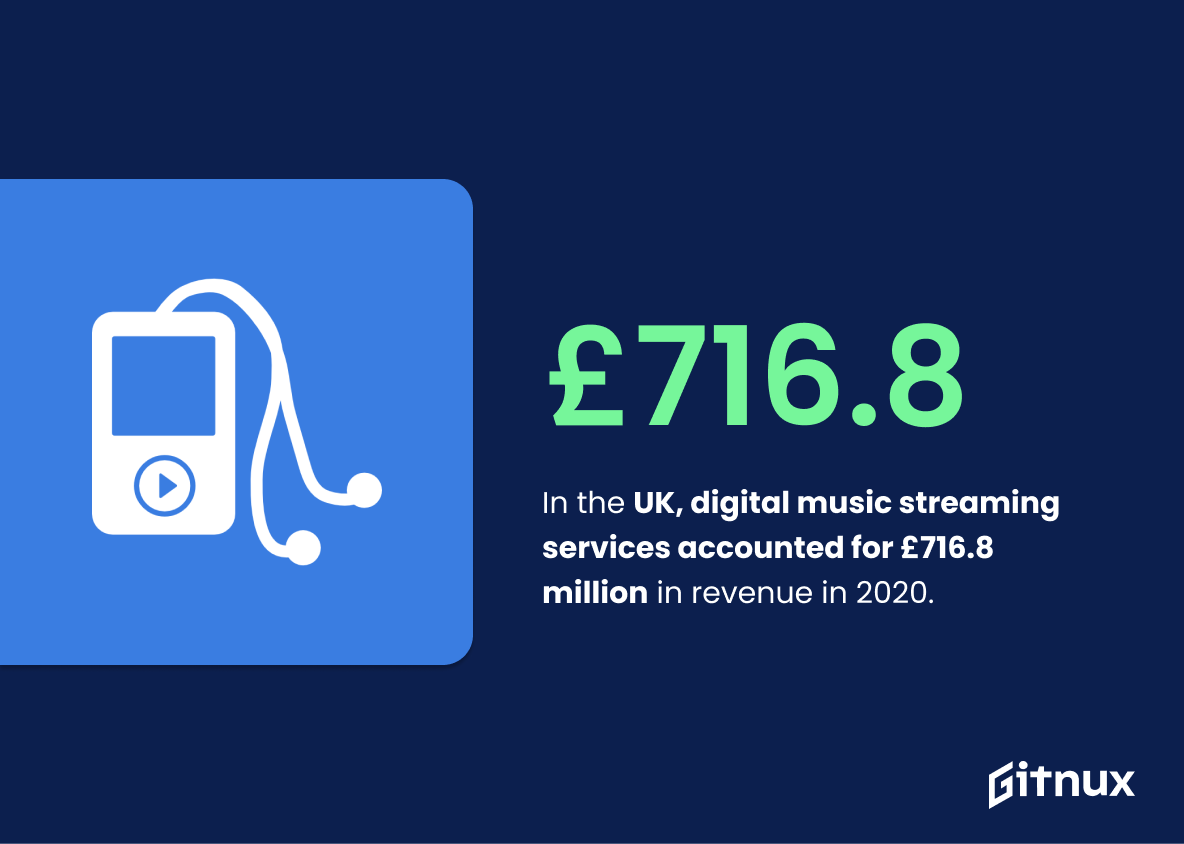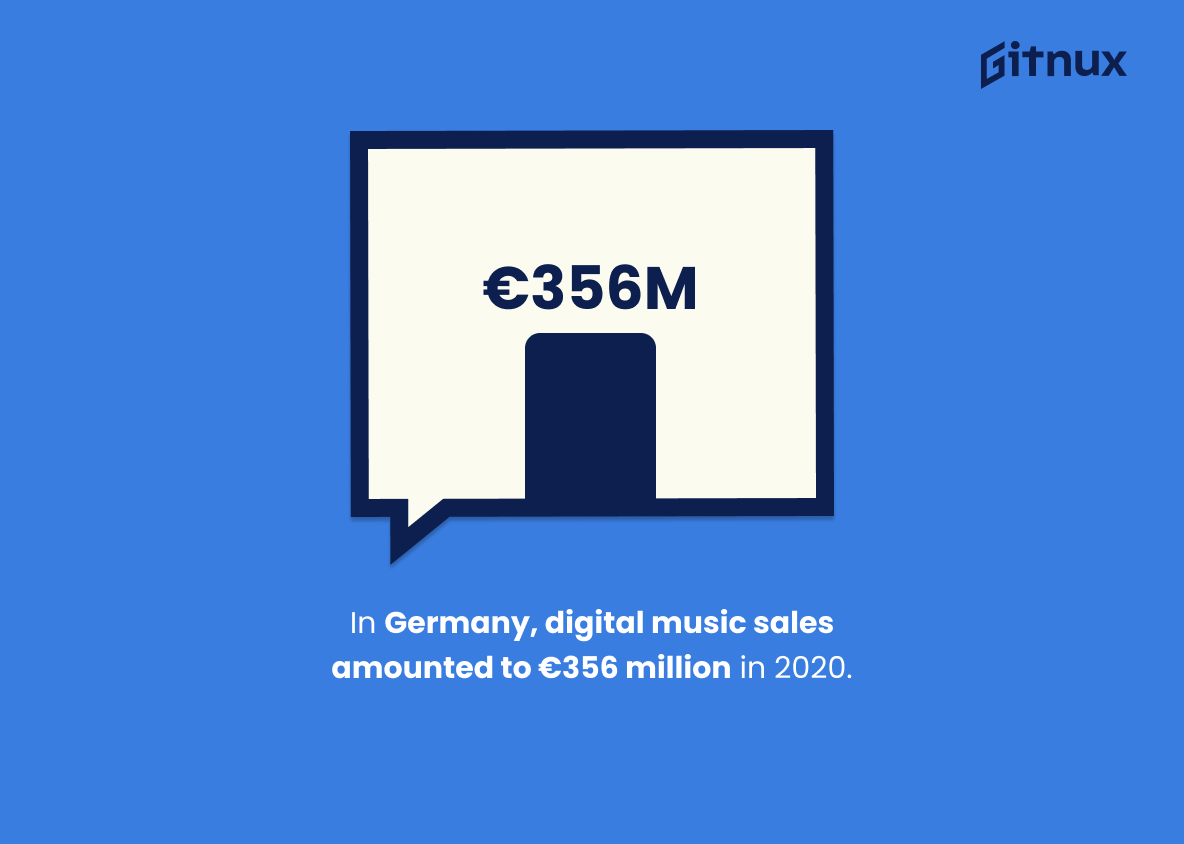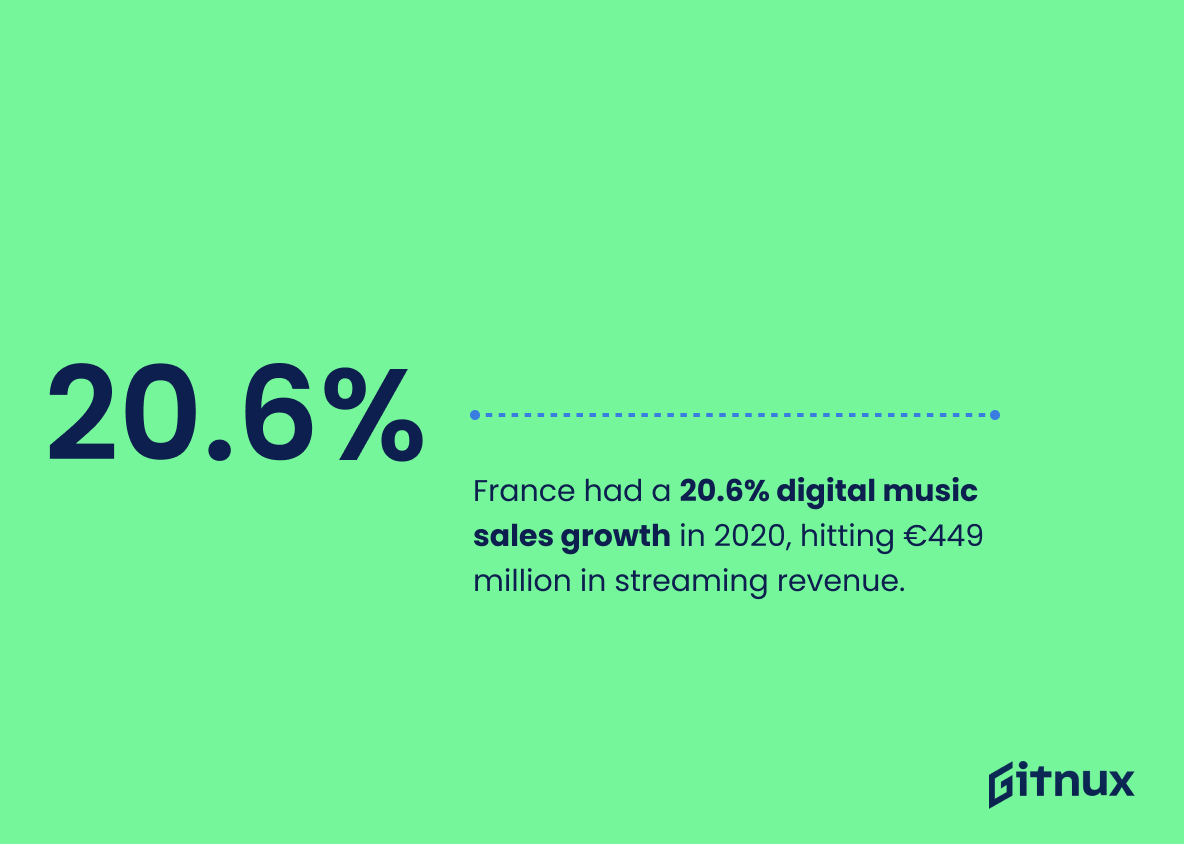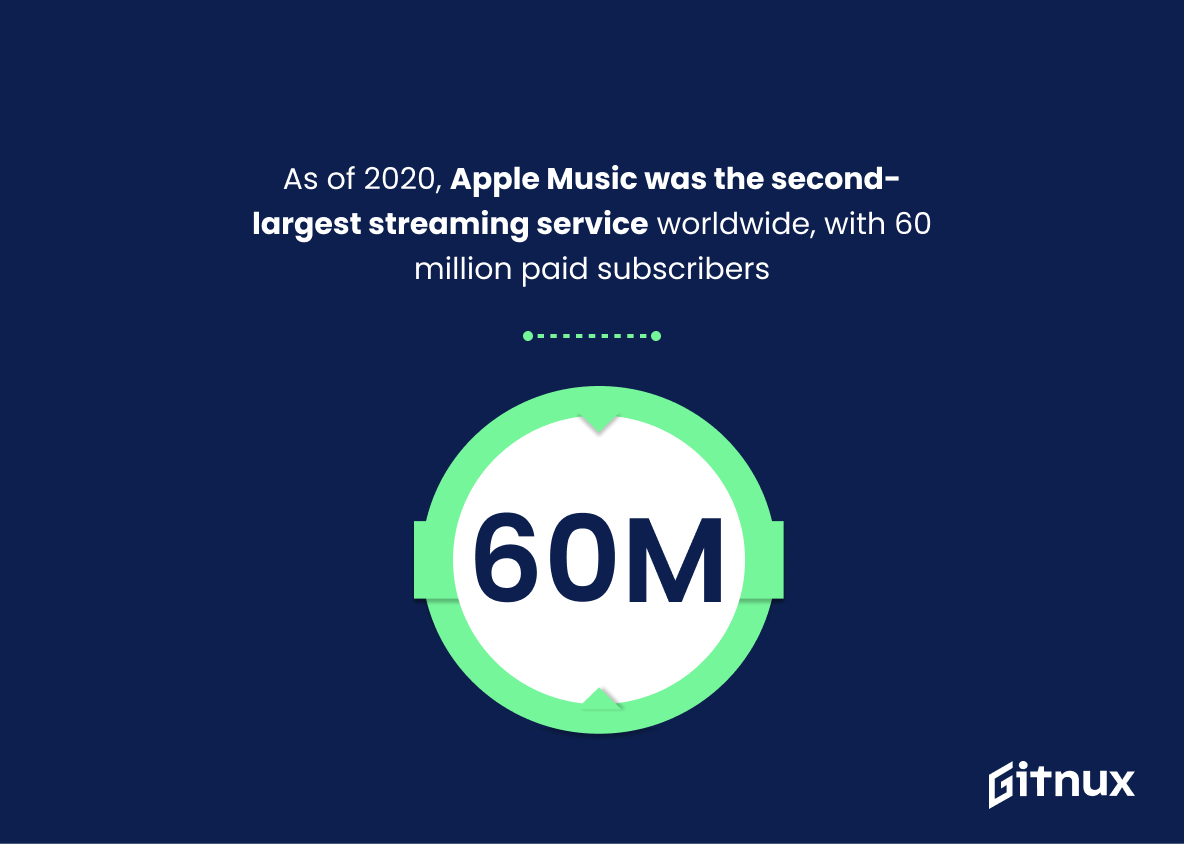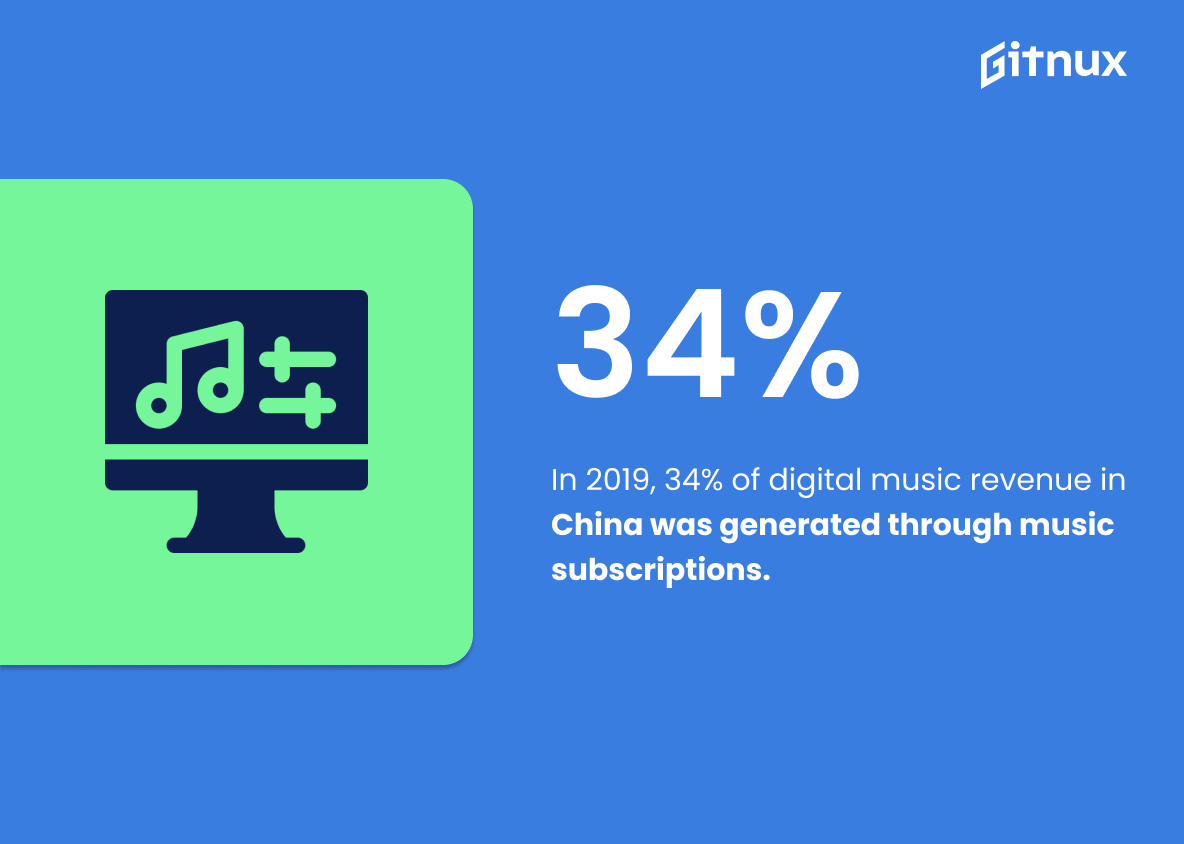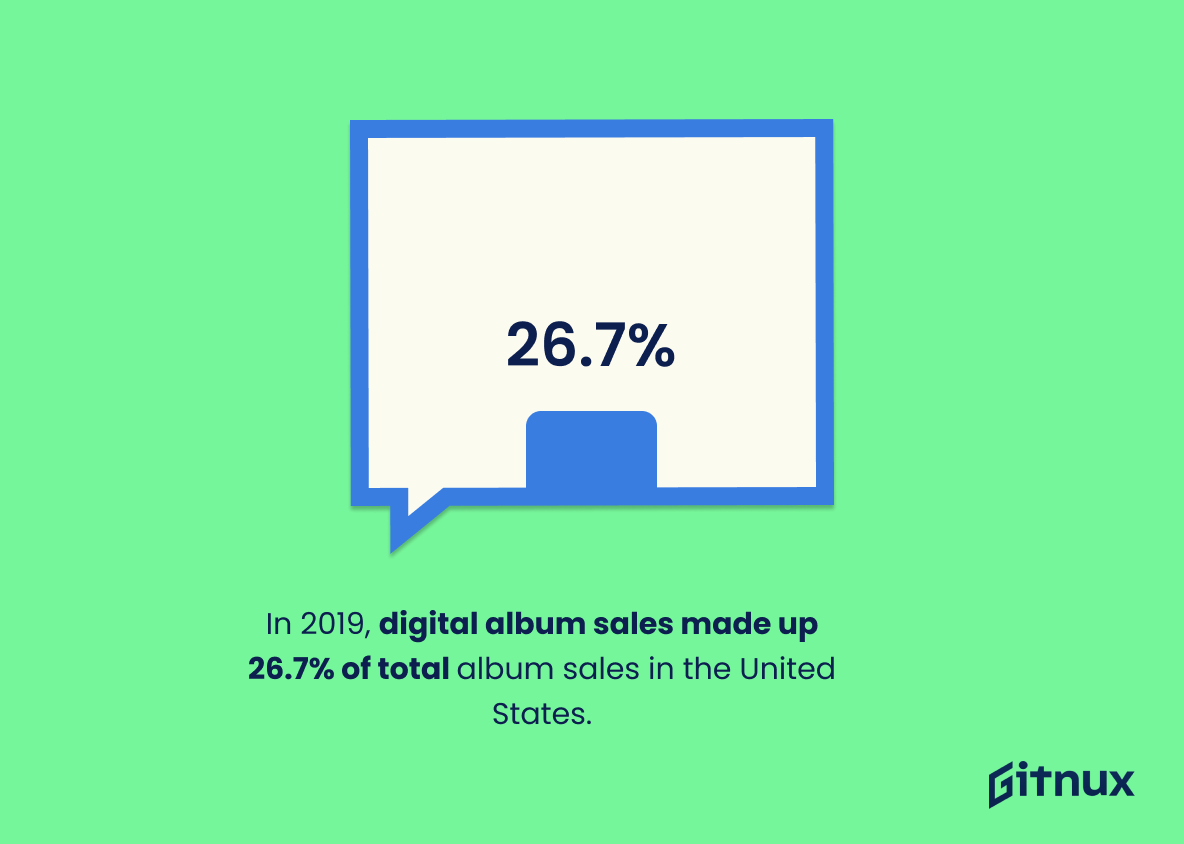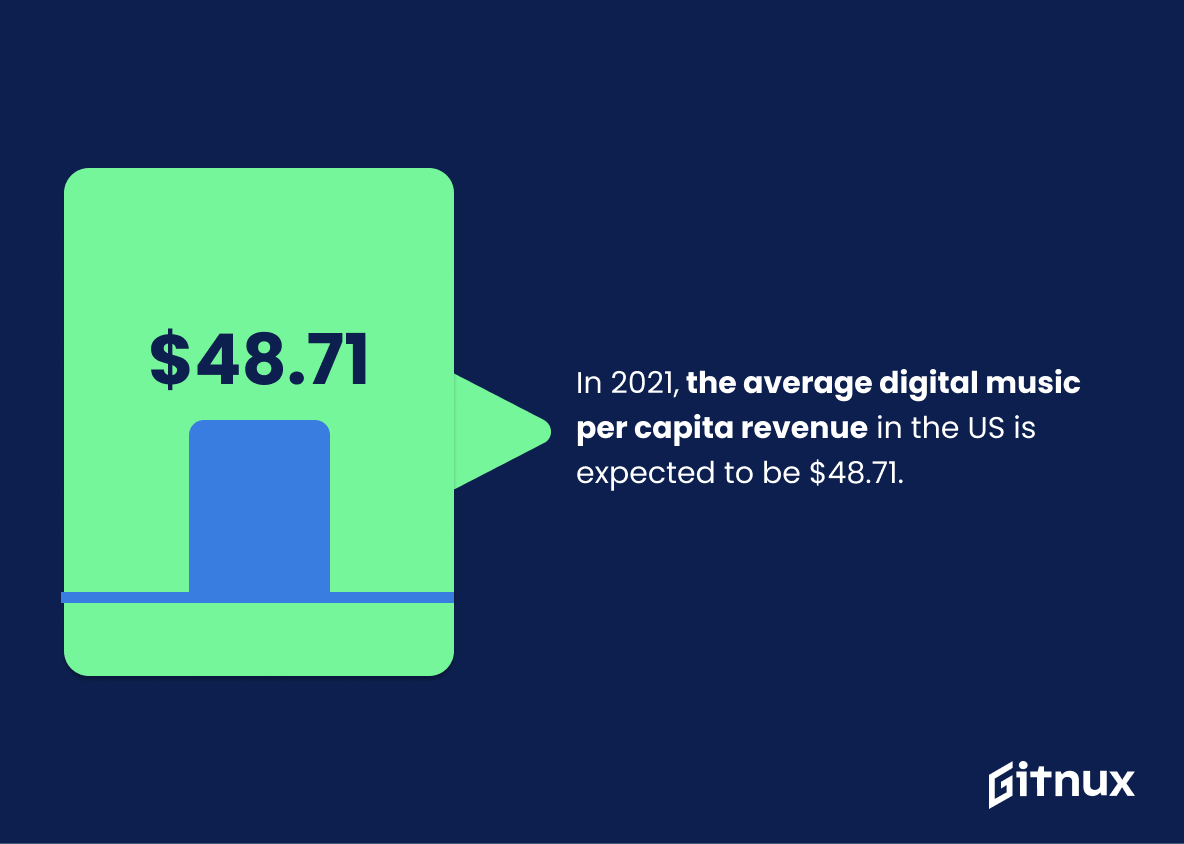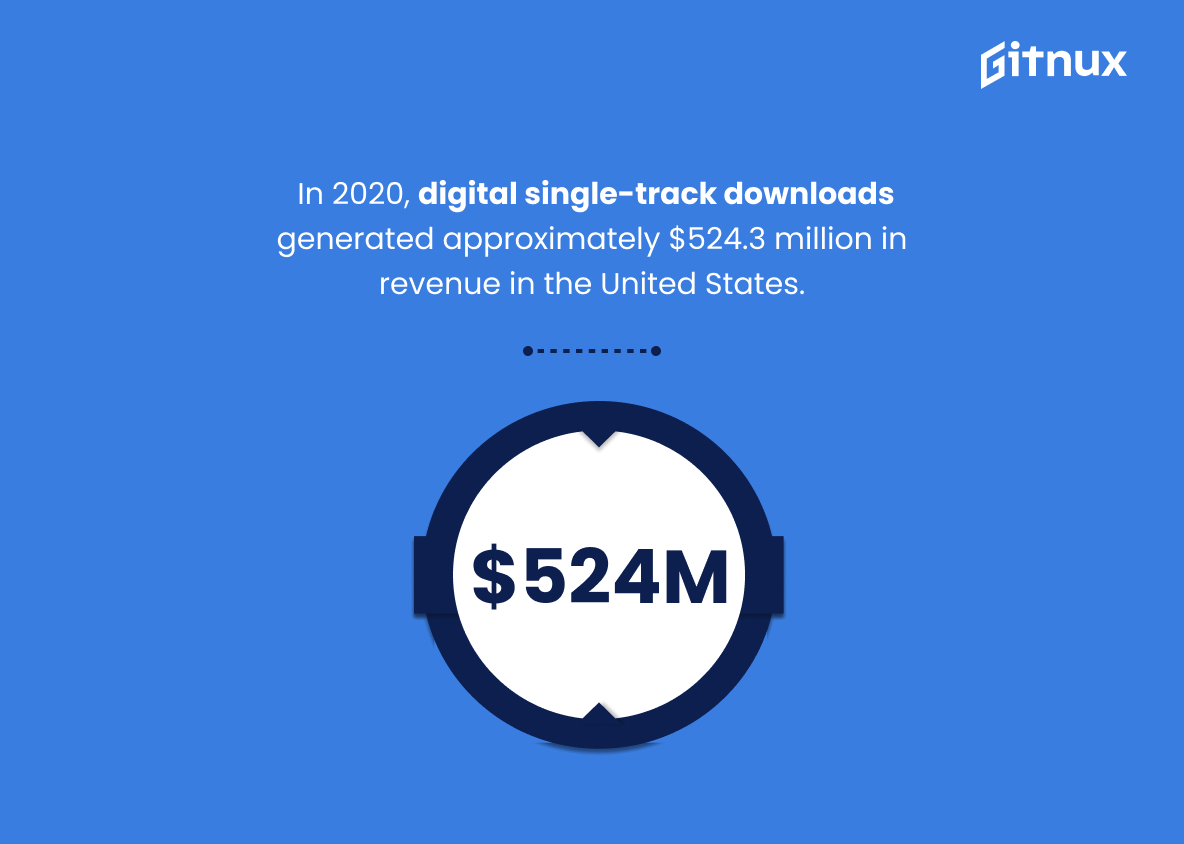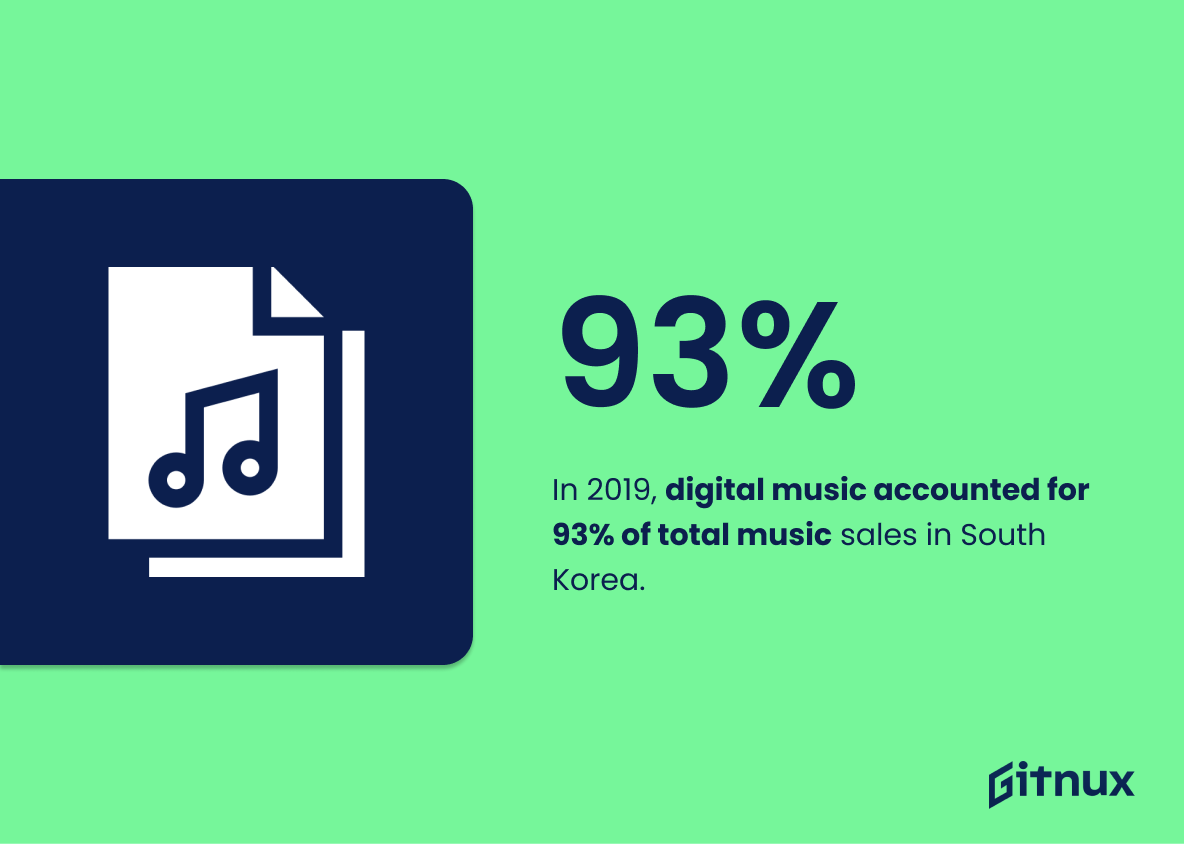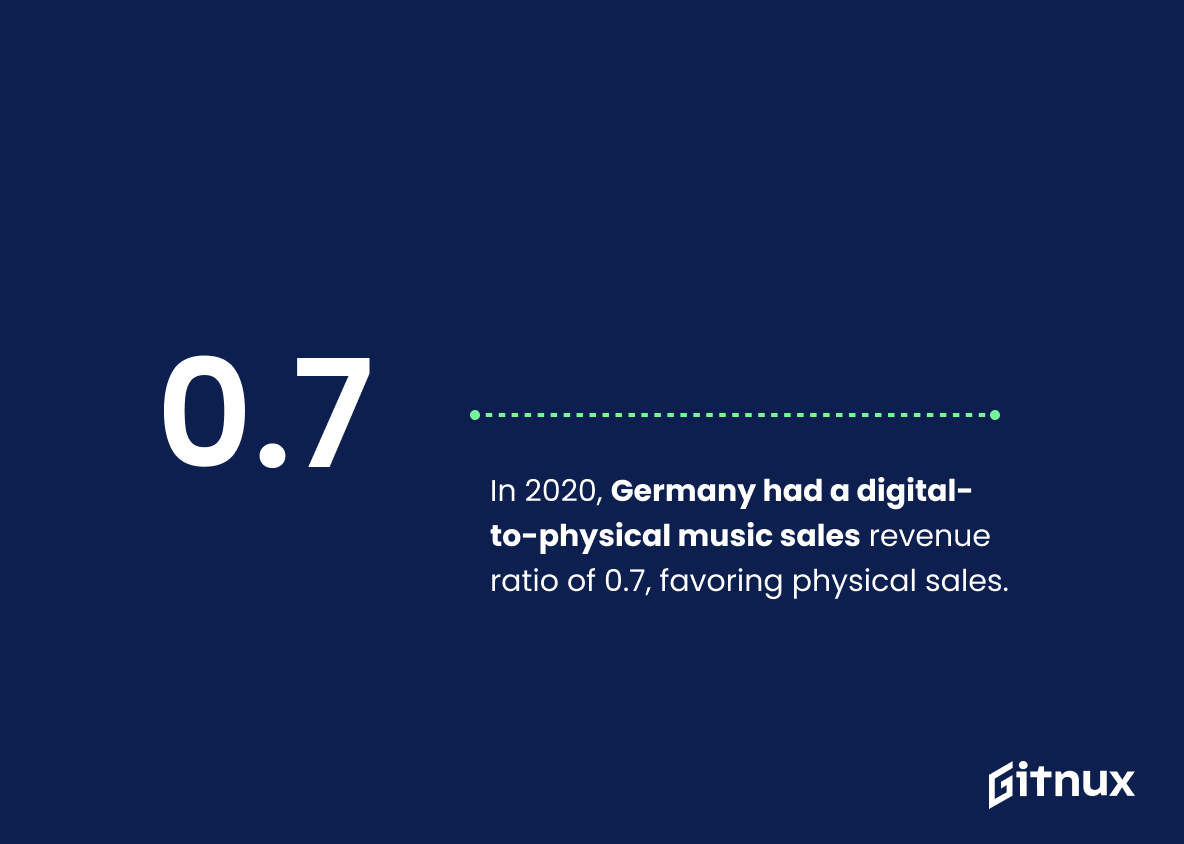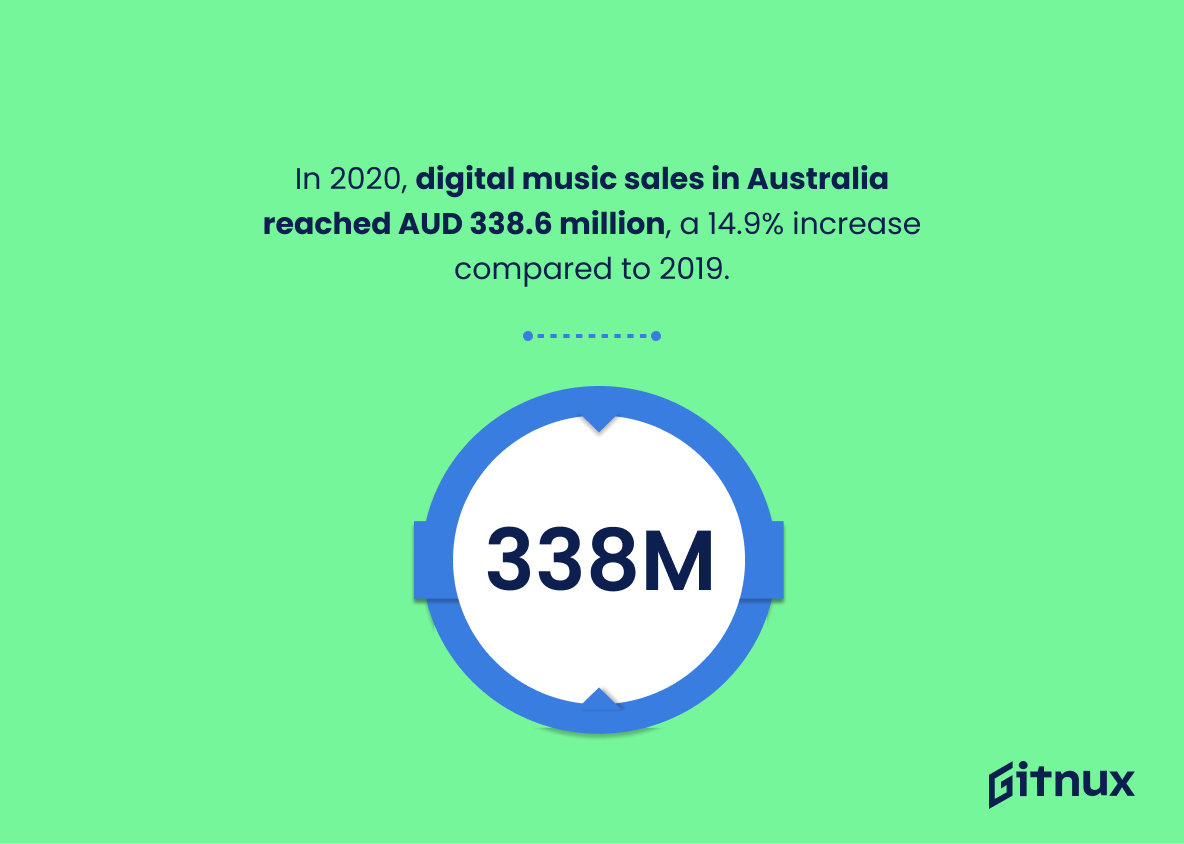The digital music industry has seen tremendous growth in recent years, with digital sales surpassing physical sales for the first time in 2020. This trend is expected to continue as more people turn to streaming services and mobile devices for their music needs. In this blog post, we will explore some of the latest statistics on global and regional digital music sales revenue, including figures from countries such as South Korea, France, Germany, Australia and the United States. We’ll also look at how different types of digital media are contributing to overall revenues and which streaming services have become leaders in terms of subscribers worldwide.
The fact that streaming now accounts for over half of digital music sales globally is a testament to the power of digital music. It shows that the industry is rapidly shifting away from physical formats and towards digital streaming services, which are becoming increasingly popular among music fans. This shift is likely to continue in the future, as streaming services become even more accessible and convenient for consumers. As such, this statistic is an important indicator of the direction the digital music industry is heading in.
In 2020, digital music sales in South Korea rose by 45.6% while physical music sales increased by 10.2%.
This statistic is a powerful indicator of the growing trend of digital music sales in South Korea. It shows that digital music sales are outpacing physical music sales, suggesting that digital music is becoming the preferred medium for music consumption in the country. This is an important trend to note, as it could have implications for the future of the music industry in South Korea and beyond.
Digital Music Sales Statistics Overview
In the UK, digital music streaming services accounted for £716.8 million in revenue in 2020.
The fact that digital music streaming services generated £716.8 million in revenue in 2020 is a testament to the power of digital music sales. It shows that digital music is a viable and profitable industry, and that it is here to stay. This statistic is a clear indication that digital music is a major player in the music industry, and that it is an important source of income for artists and labels alike.
In Germany, digital music sales amounted to €356 million in 2020.
This statistic is a testament to the immense popularity of digital music in Germany. It shows that digital music sales have become a major source of revenue for the music industry in the country, and that people are increasingly turning to digital platforms to access their favorite tunes. This is an important trend that should be taken into account when discussing digital music sales statistics.
France saw a 20.6% growth in digital music sales in 2020, with streaming revenues reaching €449 million.
The remarkable 20.6% growth in digital music sales in France in 2020 is a testament to the power of streaming services in the music industry. With streaming revenues reaching €449 million, it is clear that digital music sales are becoming increasingly popular in the country. This is an encouraging sign for the music industry, as it shows that people are still willing to pay for music despite the availability of free streaming services.
In 2020, 13% of digital music buyers in the US made purchases using a mobile device.
This statistic is a telling indication of the growing importance of mobile devices in digital music sales. It shows that mobile devices are becoming increasingly popular as a means of purchasing digital music, and that businesses should take this into account when developing their digital music sales strategies. Furthermore, it suggests that mobile-friendly platforms and services should be prioritized in order to maximize digital music sales.
As of 2020, Apple Music was the second-largest streaming service worldwide, with 60 million paid subscribers.
This statistic is a testament to the success of digital music streaming services, particularly Apple Music. It shows that streaming services are becoming increasingly popular, with more and more people opting to pay for a subscription to access their favorite music. This is a clear indication that digital music sales are on the rise, and that streaming services are becoming an increasingly important part of the music industry.
In 2019, 34% of digital music revenue in China was generated through music subscriptions.
This statistic is a telling indication of the growing popularity of music subscriptions in China. It shows that more and more people are turning to subscription services to access their favorite music, rather than buying individual songs or albums. This shift in consumer behavior is indicative of a larger trend in the digital music industry, and it is important to understand this trend in order to better understand the current state of digital music sales.
In 2019, digital album sales made up 26.7% of total album sales in the United States.
This statistic is a telling indication of the growing importance of digital album sales in the United States. It shows that digital album sales are becoming increasingly popular, and that they are making up a larger portion of total album sales. This is an important trend to note for anyone interested in the digital music sales industry, as it suggests that digital music is becoming an increasingly important part of the music industry.
As of 2020, Spotify had more than 155 million premium subscribers worldwide, leading the industry for streaming services.
This statistic is a testament to the success of Spotify in the digital music streaming industry. It highlights the company’s ability to attract and retain a large number of premium subscribers, which is a key indicator of its success. This statistic is also important in the context of digital music sales statistics, as it shows the growing popularity of streaming services and the potential for digital music sales to increase in the future.
In 2021, the average digital music per capita revenue in the US is expected to be $48.71.
This statistic is a telling indicator of the current state of digital music sales in the US. It provides insight into the amount of money that the average person is spending on digital music, which can be used to gauge the overall health of the industry. Additionally, it can be used to compare the US market to other countries, and to track changes in digital music sales over time.
In 2020, digital single-track downloads generated approximately $524.3 million in revenue in the United States.
This statistic is a testament to the power of digital music sales in the United States. It shows that digital single-track downloads are a lucrative source of revenue, and that the digital music industry is thriving. This statistic is an important indicator of the health of the digital music industry, and it is essential for understanding the current state of digital music sales.
In 2019, digital music accounted for 93% of total music sales in South Korea.
This statistic is a powerful indicator of the immense impact digital music has had on the South Korean music industry. It demonstrates the overwhelming preference for digital music over physical formats, and the extent to which digital music has become the dominant form of music consumption in the country. This statistic is a testament to the success of digital music in South Korea, and serves as a reminder of the importance of digital music in the modern music industry.
In 2019, digital album sales in the UK reached 14.1 million units, compared to 38.2 million physical album sales.
This statistic is a telling indication of the changing landscape of music consumption. It shows that digital album sales are on the rise, while physical album sales are declining. This shift in consumer behavior is an important factor to consider when discussing digital music sales statistics, as it highlights the need for businesses to adapt to the changing market.
In 2020, the digital vs. physical music sales revenue ratio in Germany was 0.7, indicating a higher market share for physical music sales.
This statistic is a telling indication of the current state of digital music sales in Germany. It shows that physical music sales still have a strong presence in the market, despite the rise of digital music sales. This is an important point to consider when discussing digital music sales statistics, as it highlights the need for digital music sales to continue to grow in order to remain competitive.
In 2021, music streaming revenues are forecasted to experience a 1.46% year-over-year growth in France.
This statistic is indicative of the fact that digital music streaming is becoming increasingly popular in France. It shows that despite the challenges posed by the pandemic, music streaming revenues are still expected to experience a steady growth in 2021. This is a positive sign for the digital music industry, as it suggests that people are still willing to pay for music streaming services. This is an important statistic to consider when discussing digital music sales statistics, as it provides insight into the current state of the industry.
In 2020, digital music sales in Australia reached AUD 338.6 million, a 14.9% increase compared to 2019.
This statistic is a testament to the growing popularity of digital music sales in Australia. It shows that more and more people are turning to digital music as their preferred way to purchase music, and that the industry is thriving. This is an important piece of information for anyone interested in the digital music industry, as it provides a snapshot of the current state of the market.
Conclusion
The statistics presented in this blog post demonstrate the increasing popularity of digital music sales worldwide. In 2020, digital music revenue exceeded physical music sales for the first time and is expected to reach $21.47 billion by 2026 with a CAGR of 10.2%. Streaming services are leading the industry, accounting for 55.4% of global digital music sales and more than 155 million premium subscribers worldwide as of 2020. The US saw 83% of total recorded music revenues coming from digital sources while South Korea experienced 45.6% growth in its own market that same year; France had a 20.6% increase in streaming revenues reaching €449 million; Australia’s figures rose 14%, totaling AUD 338 million; Germany reported €356 million worth of digital sales but still favored physical formats over their online counterparts (0:7 ratio). Mobile devices also played an important role among buyers, representing 13 percent globally last year alone – indicating how technology has become increasingly intertwined with our daily lives when it comes to accessing entertainment content such as songs or albums digitally through various platforms like Apple Music or Spotify
References
0. – https://www.statista.com
1. – https://www.billboard.com
ZipDo, cited June 2023: Digital Music Sales Statistics
